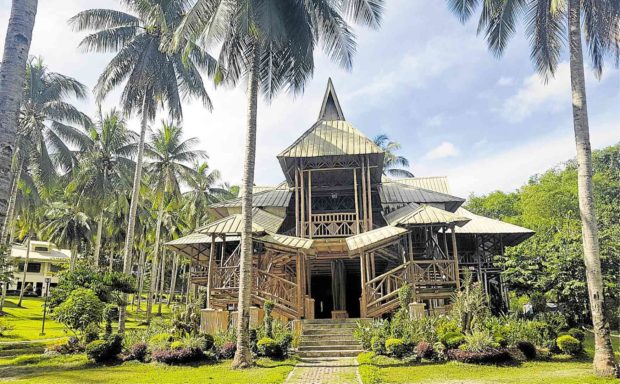
Situated along the busy Davao-General Santos highway, Malungon was culled out from neighboring towns in 1969 and formed part of South Cotabato, and later assigned to the newly-created Sarangani in 1992.
Despite being mountainous and landlocked, it has attained a first-class income classification and has even landed in the top 50 of the Department of Trade and Industry’s Cities and Municipalities Competitiveness Index in 2017 and 2018.
With a population of about 110,000 and a 750.92 sq km land area, its economy is largely agriculture with a high-level production of dried coconut meat, followed by animal husbandry, notably cattle farming.
Other vital agricultural produce are coconuts, corn, sugarcane, bananas, pineapples, mangoes, pork, eggs and beef. The town is regarded as the “mango capital” of Sarangani with its vast plantations which can yield some 18,000 metric tons annually.
A major player in the town is the Stanfilco Division that the Dole Philippines conglomerate has set up in Brgy. Malandag area for its banana, papaya and asparagus production. The rapidly-urbanizing area is also home to agribusiness firms Davao Musatech Corp. and La Hermosa Stock Farm.
With its proximity to General Santos City, Malungon is also top alternative for investments because of its vast available land, cheaper land value, lower real estate taxes and investor-friendly policies.
Among the business opportunities the municipal government are attracting are industrial tree plantation, high value and industrial crop production, light manufacturing industries, telecommunications, post-harvest facilities, and cold storage to support the fishing industry at Sarangani Bay.
The town is also ideal for property development, such as mass housing and mixed-used townships, because of its convenient location along Mindanao’s bustling corridor.
Known for its rich indigenous culture, Malungon is a tourist hotspot in southern Mindanao. A sought-after attraction is Lamlifew Village Museum, the country’s first community tribal museum, which was publicly opened in 2007 at the National Museum in Manila.
The place is noted for its eco-cultural experience, where guests are immersed to the Blaan way of life through music, dance, weaving, craft and cuisine. Its core is the gumusek or museum which serves as repository of handwoven regalia, musical instruments, accessories, and traditional house implements. It also has a weaving center and the Blaan School of Living Traditions, supported by the National Commission for Culture and the Arts, where the exquisite mabal tabih fabric is woven.
Early this year, it won in the Outstanding Corporate Social Responsibility Project in Arts and Culture of the League of Corporate Foundations Guild Awards under the auspices of ABS-CBN Foundation’s Bantay Kalikasan.
A new must-see for culture vultures is the Tagakaolo School of Living Traditions in Upper Lumabat, the first of such facility for the indigenous group in the hinterlands of Sarangani.
Kalonbarak Skyline Ridge, a public eco-park and campsite overlooking the rolling hills, seas and plains of Davao del Sur, Sarangani, and South Cotabato. With an altitude of 816 meters above sea level, the mountain park has spurred development of the road network and appreciation of land value in the vicinity.
To spur tourism and economic activities, and attract the attention of potential investors for a private-public partnership, the local government introduced the Kalonbarak Summer Music and Mountain Adventure (Kasumma) Festival in partnership with the Sarangani Provincial Government and the Department of Tourism-Region 12.
Malungon has also emerged as a farm tourism hub due to the presence of farm resorts which offer a merry mix of agrarian and non-traditional recreation.
Topping the list is the Malungon Retreat and Training Center which is engaged in community projects to keep the rich indigenous culture of the Blaan and Tagakaolo tribes alive. Operated by the Center for Community Transformation, it has a 72-hectare model farm where tribesmen do traditional agriculture, and their indigenous culture and cuisine is showcased through a package tour.
RioVerde Farm and Forest is a reforestation and integrated, organic upland farm with two farms, the 47-ha Sitio Rancho for upland crops and the 15-ha Sitio Alngihan for high-value vegetables. Recognized by the Agriculture Training Institute as a learning site, it offers an array of farm activities to visitors who would like to experience agrarian living.
Another attraction is the B3 Sodaco Farm which has a natural lake with open cottages, bamboo rafts, boating and fishing.
Its best kept secret perhaps is the 9-hole Sarangani Golf and Country Club where golf aficionados can perfect their swing in a scenic yet uncrowded fairway with a majestic view of Mt. Matutum.
The biggest proof that this bustling town has come of age is the congressional bill to split it into two and create the Municipality of Malandag to spread the sunshine in the far-flung villages. Up for deliberation at the House of Representatives, the bill is expected to be signed into law within the current Congress
That will be another earth-shaking news for the title town of Malungon.

